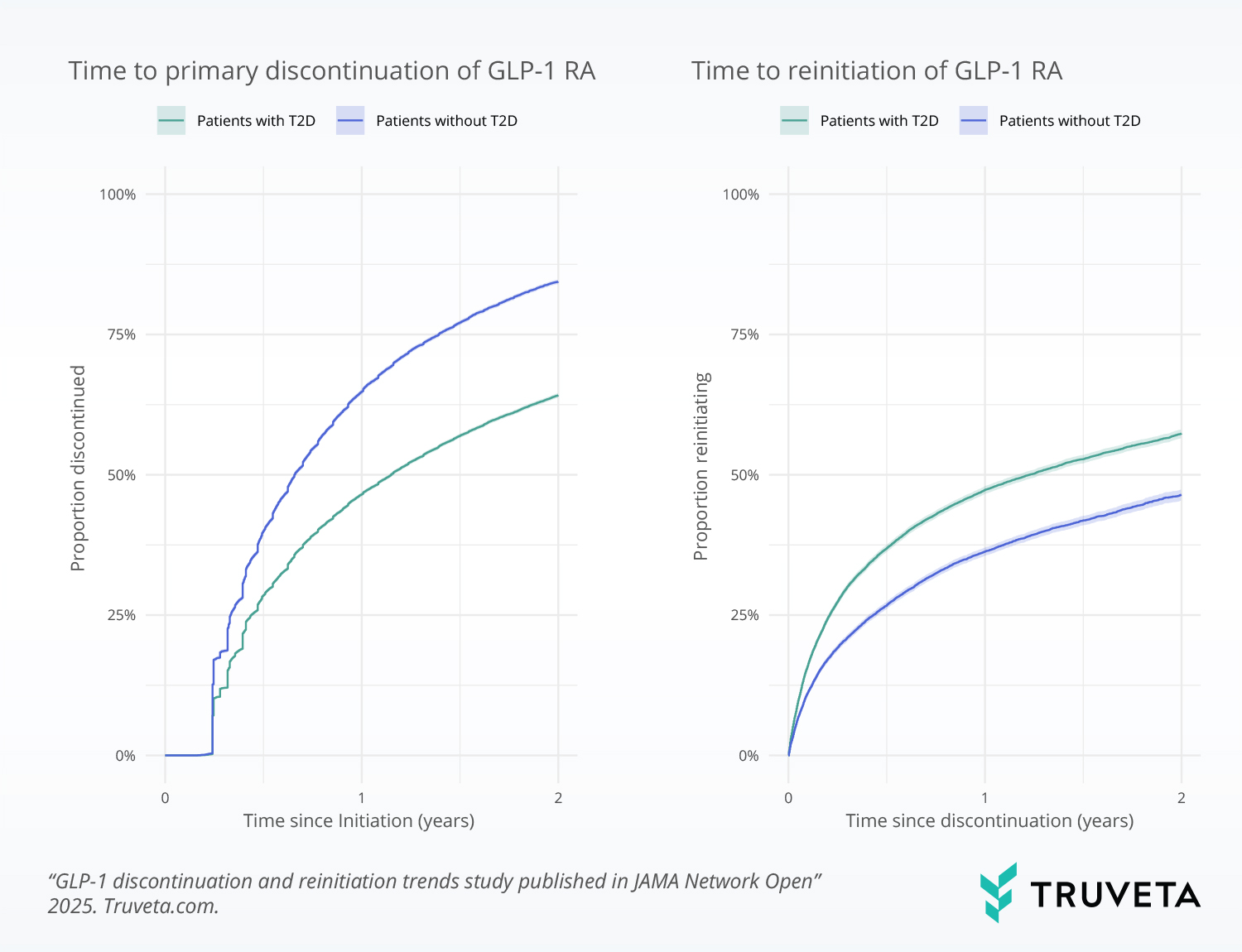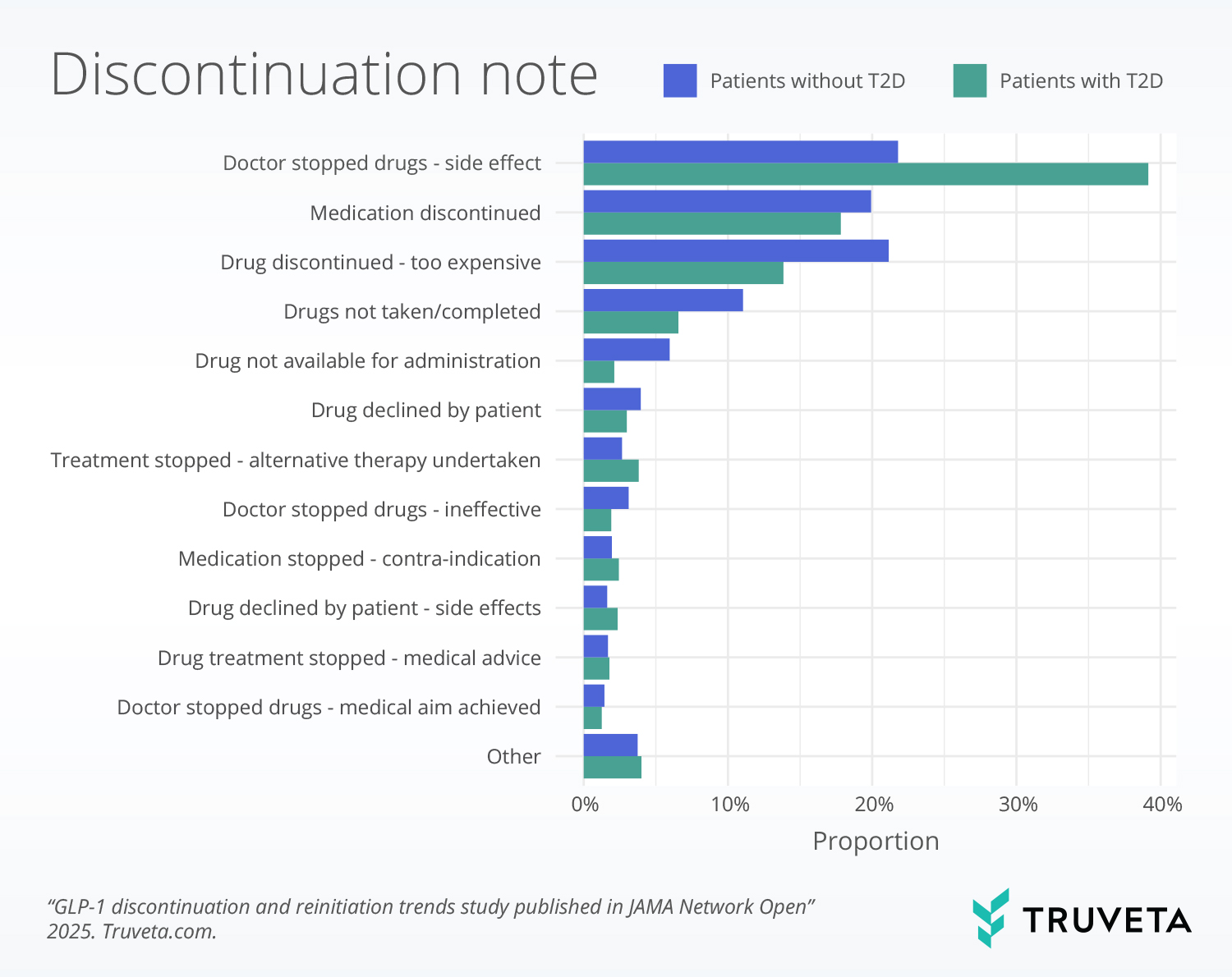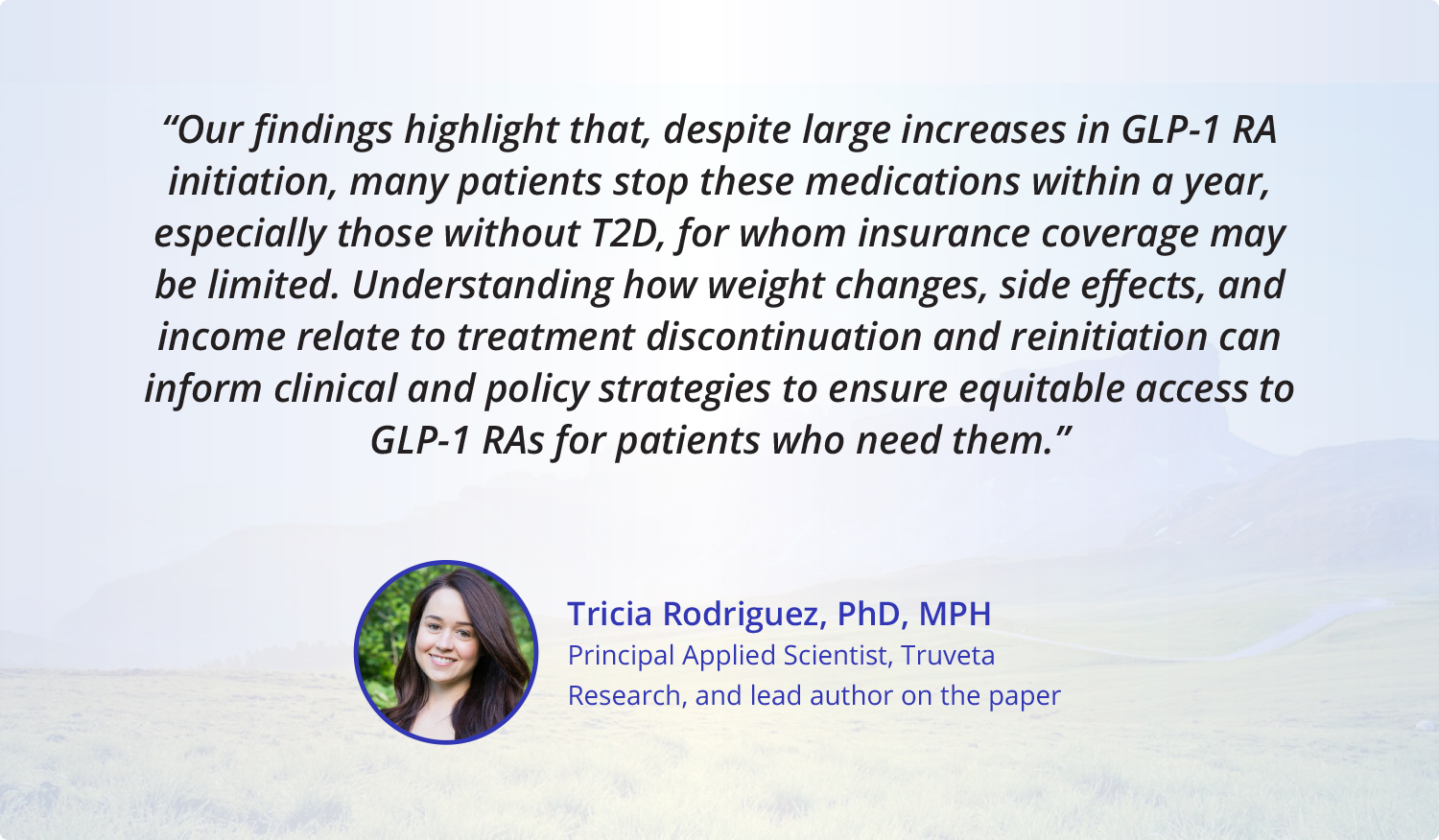- Discontinuation within one year was significantly higher in patients without T2D (64.8%) compared to those with T2D (46.5%).
- When patients experienced greater weight loss, they were less likely to discontinue the GLP-1 RA medications.
- Among patients with T2D, higher income was associated with lower discontinuation.
- Of 41,792 patients who discontinued and had post-discontinuation weight data, 1-year reinitiation was lower in patients without T2D (36.3% restarted within a year) compared to those with T2D (47.3% restarted within a year).
- Weight gain after stopping a GLP-1 RA was associated with a higher likelihood of restarting the medications.
Over 70% of US adults have obesity or overweight, resulting in estimated medical costs over $170 billion each year. While GLP-1 RA medications can successfully help treat type 2 diabetes and obesity, as well as improve cardiovascular health, evidence suggests they must be continued for sustained effects.
While some existing studies have explored discontinuation rates, they’ve identified widely varying rates of GLP-1 RA discontinuation at one year – and factors such as cost, insurance, comorbidities and absence of type 2 diabetes (T2D) have been associated with that discontinuation. The role of weight loss in discontinuation is not well understood. To our knowledge, no studies have characterized reinitiation of GLP-1 medications in the US.
In collaboration with Ezekiel Emanuel, MD, PhD from University of Pennsylvania Perelman School of Medicine and Ty J. Gluckman, MD from Providence, Truveta Research shares a new study that is the first to explore GLP-1 reinitiation trends and factors among patients with overweight or obesity following discontinuation.
Today, that study was published in JAMA Network Open.

Key findings
Using Truveta Data, the study included 125,474 adults with a baseline body mass index (BMI) of 27 or higher who initiated treatment between January 1, 2018, and December 31, 2023.
The study followed patients for up to two years to assess discontinuation (e.g., stopping their GLP-1 RA) and for an additional two years to monitor reinitiation (e.g., restarting a GLP-1 RA).
Patients were grouped based on the presence of type 2 diabetes (T2D) at treatment initiation, with 76,524 (61%) individuals having T2D.
Key findings include:
- Discontinuation within one year was significantly higher in patients without T2D (64.8%) compared to those with T2D (46.5%).
- The study found that when patients experienced greater weight loss, they were less likely to discontinue the GLP-1 RA medications. A 1% reduction in weight from baseline was associated with approximately 3% lower likelihood of stopping a GLP-1 RA. As an example, for a person weighing 200 pounds at initiation, losing 10 pounds (a 5% change in weight) was associated with a 15% lower likelihood of discontinuation, whereas losing 5 pounds (2.5% change in weight) was associated with an 8% lower likelihood of discontinuation.
- Among patients with T2D, higher income was associated with lower discontinuation. Those with incomes of $30,001-50,000, $50,001-80,000, and >$80,000 were 12%, 20%, and 28% less likely, respectively, to stop treatment, compared to those with incomes <$30,000.
- Moderate or severe gastrointestinal side effects were strongly associated with higher likelihood of discontinuation.
- Of 41,792 patients who discontinued and had post-discontinuation weight data, 1-year reinitiation was lower in patients without T2D (36.3% restarted within a year) compared to those with T2D (47.3% restarted within a year).
- Weight gain after stopping a GLP-1 RA was associated with a higher likelihood of restarting; a 1% weight gain after discontinuation was associated with approximately a 2.5% higher likelihood of restarting GLP-1 RA. As an example, for the person who initiated at 200 pounds, lost 10 pounds at the time of discontinuation (5% reduction in weight), a regain of 6 pounds since stopping (3% increase in weight) was associated with an 8% higher likelihood of restarting, compared to someone who did not regain any weight.

Additional discontinuation insights from clinical notes
In a supplement to the study, the authors dug deeper into potential reasons for discontinuation for a subset of the study population who had an associated clinical note for GLP-1 discontinuation.
The graphic below shows the proportion of patients with and without T2D who had a clinical note for GLP-1 discontinuation within 365 days of the discontinuation date found in structured data.

Discussion
This study reveals that most patients discontinue GLP-1 RA therapy within one year, with significantly higher rates of discontinuation and lower rates of reinitiation among individuals without type 2 diabetes. These findings highlight inequities in access and adherence to effective obesity treatments, emphasizing the potential for these disparities to exacerbate health inequities related to obesity management.
This research provides valuable guidance for clinicians, policymakers, and healthcare organizations seeking to improve long-term treatment outcomes for individuals with overweight and obesity.


You can view the full study on JAMA Network Open.

